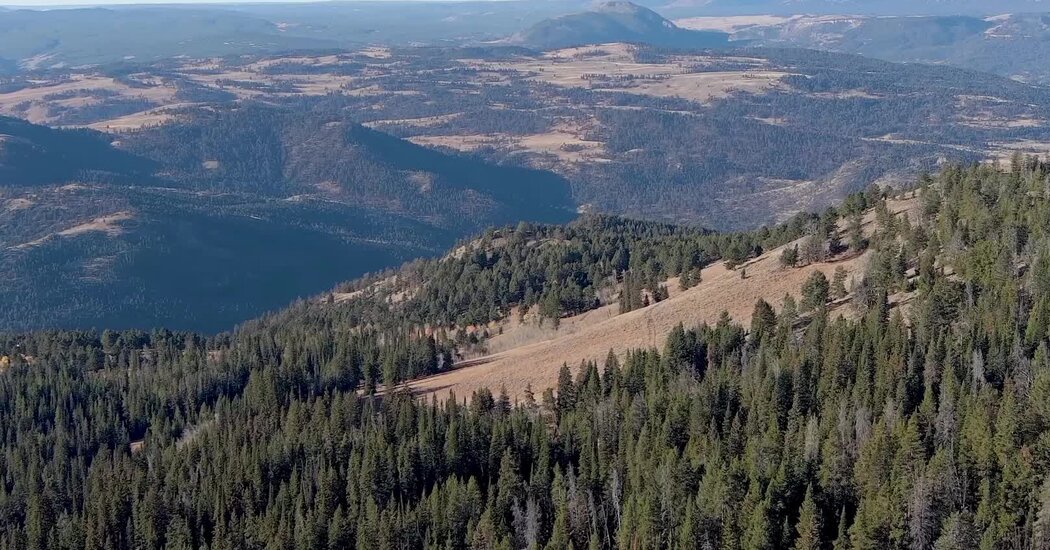Scott Christensen was standing on a mountain looking down into Yellowstone National Park late last month when he spotted a fresh track from a grizzly bear in the mud, about two inches in front of his foot. He wasn’t scared, but rather relieved and gratified.
The bear, as well as other wildlife, including the thousands of elk that migrate through the area, would be able to keep roaming on the side of the mountain, known as Crevice Mountain, instead of ceding territory to heavy machinery and miners in search of gold.
Mr. Christensen, the executive director of the Greater Yellowstone Coalition, a conservation group, spotted the bear track on Sept. 25, just hours after the coalition purchased 1,598 acres of the mountainous property in Montana from a company that had planned to build a gold mine there.
The land had cost $6.25 million, and the purchase extinguished what Mr. Christensen said was the last viable mining threat on the boundaries of Yellowstone.
“It was a long and difficult road of negotiations to get there,” Mr. Christensen said. “But it led to what I look at as a real win-win solution for the park and all of us who care deeply about it.”
The Greater Yellowstone Coalition bought the land because it was concerned that mining would harm wildlife and water quality in the area, which overlooks the Yellowstone River and the north entrance of Yellowstone National Park. The land is a habitat for grizzly bears and a migration corridor for elk, mule deer and bighorn sheep. Bison from Yellowstone’s herd roam there.
The region has also attracted gold mining since the 1850s.
In 2015, the owner of the mineral rights to Crevice Mountain, Crevice Mining Group LLC, submitted an application to dig on the land. Michael Werner, the company’s sole proprietor, said he had received a $12.5 million loan to build there. “We were going to mine 300 ton a day and produce almost half an ounce of gold per ton, which is really high for most operations,” he said.
At the same time that Crevice introduced its plan for the site, a separate mining proposal was submitted for a location a few miles north, called Emigrant Gulch, in Paradise Valley.
Both of these efforts faced opposition from environmental groups and residents concerned about the environmental impact and its potential damage to the local economy. Lawmakers took steps to protect the land temporarily. But to have the mineral rights in the area permanently withdrawn, Congress would need to intervene.
That…
Click Here to Read the Full Original Article at NYT > Travel…
